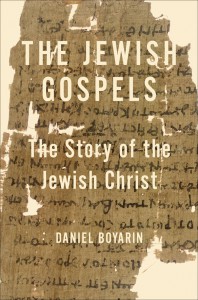Q&A: Can we call the Holy Spirit the Spirit of Jesus?
SA asks:
Hi Will,
Can we call the Holy Spirit, Jesus’ Spirit? What do you think?
Clearly he isn’t Jesus because he is the third person of the trinity, but I am a bit muddled as we sometimes say Jesus is with us by his spirit. What do we mean by that? Do we mean Jesus? Do we mean the Holy Spirit? Or are we meaning specifically the Holy Spirit but also Jesus and the Father as our God is one?
For example, when Jesus said he would be with us until the end of the age did he mean himself or the Holy Spirit? In John 14 Jesus promises “another Counsellor to be with you forever, the Spirit of truth” but also that the Father and he (Jesus) will make their home in the believer.
And then I look at Romans 8:9 where Paul talks about the indwelling of the Holy Spirit and calls him both the Spirit of God and the Spirit of Christ in quick succession and then says that “if Christ is in you….”
And Galatians 2:20 “Christ who lives in me..”
I’m not sure if I’ve even articulated my question clearly!
[This is a Q&A question that has been submitted through this blog. You can submit a question (anonymously if you like) here: http://briggs.id.au/jour/qanda/]

Thanks for the question. It takes us into the area of trinitarian theology, which is notoriously brain-bending, but is also deep, profound, and joy-bringing.
The short answer to your question is yes, we can (and must) understand that the Holy Spirit is Jesus’ Spirit.
The longer answer means exploring the conundrum that you have described. Your exploration is great. You’ve quoted the verse that I would have gone to as a way into it: In Romans 8:9-11 the Holy Spirit is referred to in the following ways:
- “the Spirit”
- “the Spirit of God”
- “the Spirit of Christ”
- “the Spirit of him who raised Jesus from the dead”
This passage also has a close correlation between “the Spirit” and “Christ” with regards to the one who dwells “in you.” You’ve also rightly picked up other places where this is implied – Galatians 2:20 – and also Matthew 28:20 where Jesus says “I am with you always”, just before he leaves! Of course, the Spirit is subsequently present.
It can be a bit of a brain twister, so what do we do with it?
We can get a little bit theological: What is being emphasised here is the unity of the Trinity. We cannot separate Father, Son, and Holy Spirit. The Spirit reveals the Son, and if we see the Son we have seen the Father (that’s John 14 again). This unity is at the heart of the gospel: Jesus is not one third of God of with us, he is truly God with us. As Paul assures us in Colossians 2:9, in Christ “all the fullness of the Deity lives in bodily form.”
We can even get a bit metaphysical about it. My tentative exploration begins with thinking of God as a relational dynamic, and I start by looking to God the Father [As an aside, the Orthodox emphasis on the Father as the “Fountain of Deity” got me thinking here]: The Father perfectly and eternally pours himself out into the Son. We call this “begetting” and think of the way in which a parent desires to pour themselves – their character, wisdom, understanding, etc. – into their children and extrapolate from that. This is so eternal and perfect that the Son isn’t just a reflection of the Father, the Father is pouring out his very being, and so the Son is of the same dynamic essence. The Son therefore pours himself back towards the Father, in response, agreement, and self-giving.
The Son’s eternal and perfect “pouring back” is an eternal and perfect “Yes and Amen” to the self-giving of the Father. This eternal and perfect outpouring perfectly and eternally manifests not just the power and character of the Father and the Son, but the very substance of who they are. This mutual outpouring manifests perfectly and eternally in the person of the Holy Spirit, proceeding from the Father’s eternally begetting love and the Son’s eternal returning joy.
Take any aspect of this away and then the dynamic is not eternal or perfect, and therefore not God. That is, if the Spirit is not totally the Father’s Spirit, or the Son’s Spirit, or the Spirit of God Almighty, then God is not God.
Phew. That’s a bit heady. But can you see the passion and joy of it all? At the beginning of creation, the Father pours out in creative fervour – “Let there be light!” – the Son receives and responds in a “Yes and Amen” and from the power and joy of their agreement, the Spirit proceeds to hover over the waters of creation. Their unified love creates. It’s not like there’s some committee discussion in the Godhead about weighing up the pros and cons of creating the universe, rather the creative love and joy of Father, Son, and Holy Spirit simply brings it about. After all:
In the beginning was the Word, and the Word was with God, and the Word was God. He was with God in the beginning. Through him all things were made; without him nothing was made that has been made. (John 1:1-3)
And here is the joyous gospel part of it. We know that “God so loved the World”. At some point the heart of the Father pours out in grace and love – “Let us go to our broken children” – the Son responds with a “Yes and Amen” and the Spirit manifests that loving purpose, hovering over the womb of a young woman. And now the eternally, perfectly begetting God and Father, pours himself out, eternally, and perfectly, into a human child. The eternal, perfect dynamic that is God, can incorporate, does incorporate, and still incorporates a human being, Jesus.
The Father pours himself out into Jesus Christ, the Son of God. The Son’s response now has human voice: “Whatever the Father does, the Son does likewise” (John 5:19), and the Spirit manifests that desire as healings and miracles happen.
And then at some point it looks like the Father’s heart to save – “Let us take responsibility for our children” – and the Son, knowing exactly what that means, says “let your will be done” and enters into cruelty and injustice and forsakenness, until the sky goes dark and we hear “It is finished” and “Into your hands I commit my Spirit.” And then the self-giving, outpouring, justice-loving, fierce joy of God is truly made manifest, and we really see the Spirit of the One who raised Jesus from the dead!
All the time, at every moment, the purposes of God occur from and within this dynamic of creative thought, creative response, creative power. Every aspect of God is like this – saving thought, saving response, saving power; healing, restoring, convicting, providing etc. etc. Every time we see the heart of the Father, grounded in the Son, manifest in the Spirit.
And then, lastly, the profound realisation of it is this, if we return to Romans 8:9 – embraced as we are by Jesus, we are “in the Spirit, since the Spirit of God dwells within you.” This tells me that we are not meeting God from the outside, as if we might occasionally have an audience with the Holy Spirit, or with Jesus, or (if we’re really lucky) the Father. No! In Christ, we have been caught up into the dynamic of God himself. We don’t pray from the outside, we pray from the inside. We seek to discern the will of the Father, we seek to respond with “Your will be done” and we find, amazingly, that the Spirit of Christ, the Spirit of God, the Spirit of the one who raised Jesus from the dead, the Holy Spirit, manifests the will of God, in, with, and through us.
So yes, we can call the Holy Spirit, the Spirit of Jesus – we must! If we can’t, then Jesus is not really God incarnate, and we’re not really abiding in the Father. And there’s less gospel (if any) in that.

 I have an ongoing interest in the interaction between first-century rabbinical Judaism and Christianity. On each exploration I find increased depth and colour to my reading of the New Testament. I picked up Boyarin’s book The Jewish Gospels on something of a whim and for the title alone.
I have an ongoing interest in the interaction between first-century rabbinical Judaism and Christianity. On each exploration I find increased depth and colour to my reading of the New Testament. I picked up Boyarin’s book The Jewish Gospels on something of a whim and for the title alone.






